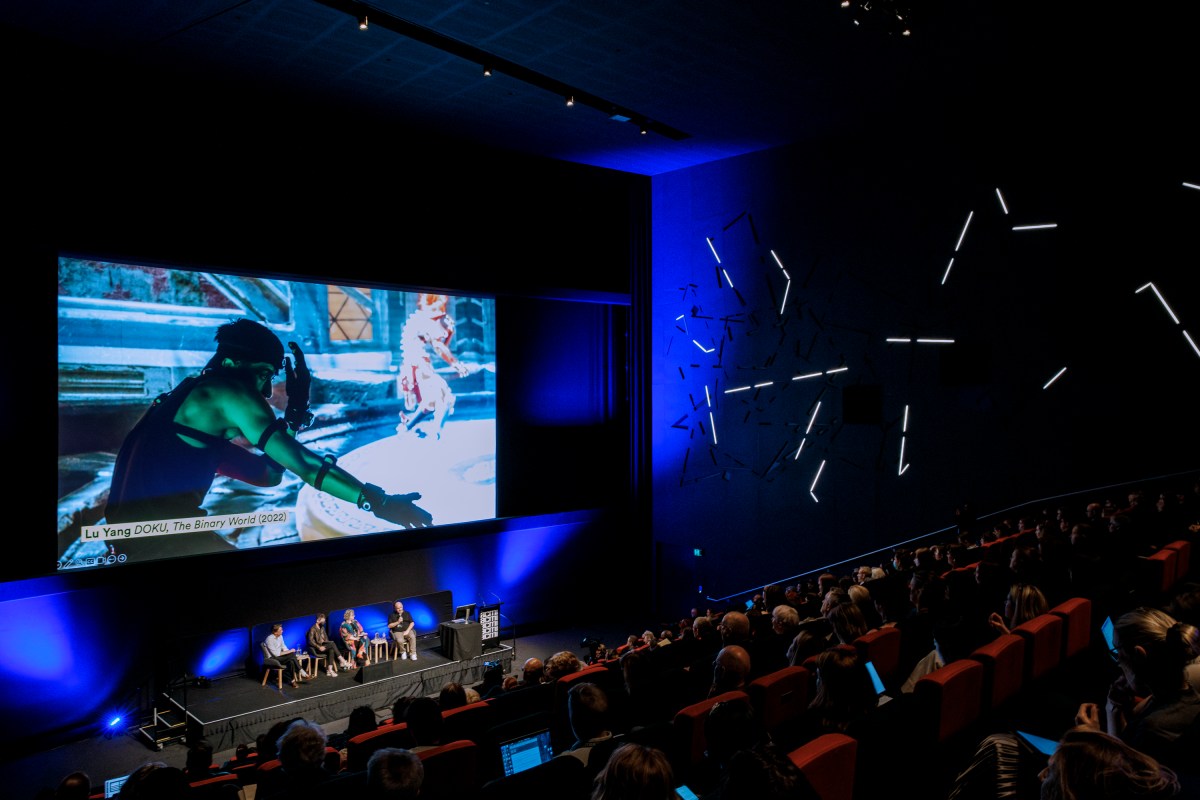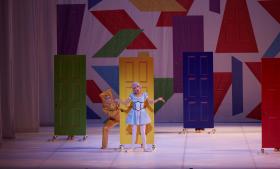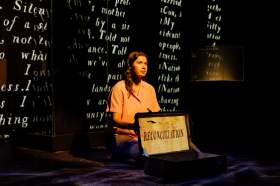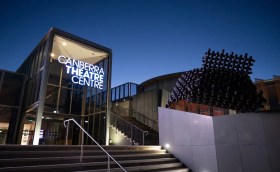At ACMI’s recent Future of Arts, Culture and Technology (FACT) Symposium 2024, three speakers gathered to discuss ‘Presenting the new canon in 2050’ – a look at the future of the arts and culture sector.
Moderated by ACMI’s Matt Millikan, the panel brought together Professor Melanie Swalwell, Acting Deputy Director, Centre for Transformative Media Technologies, Swinburne University; Professor of Law, Kimberlee Weatherall, Sydney University; and Stuart Buchanan, Head of Screen at Sydney Opera House.
The discussion touched upon live and digital performance, galleries and museums, archives, copyright and more.
Drawing upon her work as a historian of digitality in the 1980s and 90s, Swalwell said the future will ultimately hinge on what we choose to preserve now. ‘Based on the cultural studies critique of canonicity, we don’t want to be restricting our collecting and our view of what’s culturally significant to the high end of the cultural spectrum.’
She explained: ‘As I argued in my book, Homebrew Gaming and the Beginnings of Vernacular Digitality, the low-end microcomputers of the 1980s gave us insight into everyday, informal creative production, which has often been left out.
’I’m thinking about what the National Library of New Zealand has been doing, with asking for people to donate their Facebook profiles so that there can be some collection of this social media site that is local and specific… How do we actually capture what it has been like to be on these platforms in the first quarter of the 21st century?’
Some of this work is already underway, with organisations like ACMI partnering with The Australian Emulation Network: Born Digital Cultural Collection Access to host platforms for media art and more, led by Swalwell.
Can we preserve?
In Buchanan’s role at the Sydney Opera House, preservation (or not) and copyright are key considerations when working with contemporary artists on digital projects. This includes Stream, a collection of live performance films recorded on-site, and the online season, Outlines.
We tend to think of technology as robust physical equipment, but Buchanan explained a work that’s only two or three years old can already be out of date. ‘The technology that powers that original motion capture event we could probably stage again, but the very specifics of what was used – in terms of the iteration of software, the machines, actual hardware and so on – have been superseded. So whether we can actually get an exact replication [of the work or digital performance] is a question to be asked.’
In terms of defining the canon in 2050, preservation of the “now” is a big question, but so is whether a preserved work can actually be presented again in the future.
Swalwell said: ‘[As academics and researchers], we are relying on Section 113J of the Copyright Act, which supports us to emulate and render utility software and files for research purposes. But that’s one impediment that would be faced by an institution wanting to mount an exhibition.’
For Swalwell, the question to ask is: ‘In what collective way are we going to ensure that contemporary culture can be collected, preserved and exhibited in 2050?’
The future of copyright
Well, if copyright is proving to be an impediment rather than protection for our collective cultural material, should we abandon it altogether? This was one of the questions posed by an audience member to the speakers.
Before delving into this, Weatherall explained why the topic of copyright has become so unclear when it comes to digital works, and other relevant legal frameworks such as data protection rights.
Weatherall described moving to digital as a moment in which ‘copyright lost one of its anchors’. She continued: ‘[Copyright] was a physical embodiment in things – books, manuscripts, sheets of music, pieces of art. This meant that when suddenly works were zipping around the internet, enforcement got hard.
In addition, ‘With generative AI, we’re losing, or we risk losing, one of the few remaining anchors in copyright, which is that copyright protects expression … It’s the product of human creativity that is foundational to copyright, not the information embodied in it.‘
Weatherwall added: ’Copyright law is constructed by policymakers who have this image of people going to museums or archives, doing research and accessing things there.
‘The current copyright law we have here in Australia, frankly, isn’t fit for 2005, let alone 2015… let alone 2050!’
Read: AI FOMO? Why cool heads are needed in the arts
But creatives are offering some level of hope from Weatherall’s perspective, who sees how boundary-pushing practices are influencing the minds of policymakers on what’s possible.
Should we preserve?
Yet again, there is a dilemma in what we recognise as having cultural value, versus what can legally be preserved at our current point in time. Weatherall continued: ‘Copyright is a challenge for thinking about how we preserve, choose what to preserve, and preserve, keep or curate things for that moment in 2050.’
A collaborative digital work will also present multiple copyright holders at stake, so when the future opportunity comes to exhibit, it will be a lengthy process of negotiations.
Buchanan noted that the Sydney Opera House does not own copyright of commissioned work in the Screen Department, even if it is filmed. ‘The heart of the question is “Who wants to be preserved? And what right do we have as an institution to preserve?”,’ he says.
Preservation is important with regards to access for future generations, but have we not long accepted the ephemeral nature of live performances?
Buchanan continued: ‘If [an artist] doesn’t want to be recorded [or have their work presented again], then it’s not the institution’s place to force the hand of an artist to do that.
’Therefore, the canon in 2050 is actually going to be based primarily on the people who said “yes” – especially those in the performing arts, and people for whom it was possible to undertake that very complex web of rights.’
So, should we abolish copyright? ‘We need to reimagine copyright, actually,’ said Weatherall. ‘Creators still have rights, and ensuring that creators have an enduring interest in the things that they create and get paid for … is actually really important.
’Reimagining is really challenging because there are all these international treaties, but there are ways that people have started thinking about how we can protect creators with copyright, and not just the little boxes of stakeholders that have been built into the system.
’If we can ensure that creators have retained enough rights to do the preservation that we need, so that you just need permission from creators, even that would be an improvement… So that you don’t have to go to the big corporates; you’re actually dealing with the individual creators who have a personal interest in longevity.’
When it comes to collective responsibility, Weatherall added that the public plays a role in allowing institutions to capture the everyday interactions with digital works and interfaces. ‘This idea of data donation, I think we’re going to have to explore in some detail because it very much links to that question of ephemerality… Interactions with AI such as Midjourney and ChatGPT are essentially personal and ephemeral. If we’re trying to capture this cultural moment, the everydayness of these interactions, we’re going to have to work out ways to collect some of that [in consideration of privacy issues].’
While currently we cannot foretell what may be included in the art canon in 2050, there is one thing on Swalwell’s wish list worth mentioning. She hopes to see ‘an artist activation using the Robodebt algorithm’. The Robodebt scheme was the highly controversial automated debt assessment implemented in 2016 by the Liberal-National Coalition Government, and what Swalwell called ‘one of the greatest travesties of the first quarter of the 21st century in Australia’.
’Presenting the new canon in 2050’ was presented on 14 February as part of ACMI’s Future of Arts, Culture & Technology Symposium 2024.
ArtsHub attended in-person.





